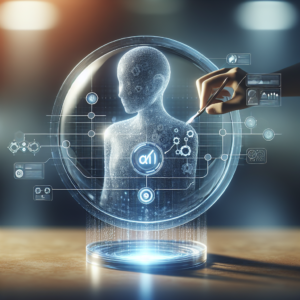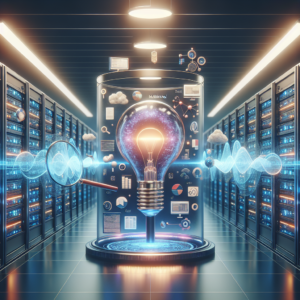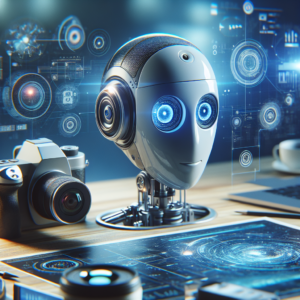What if I told you that the way I communicate with machines is rapidly changing? Natural Language Processing, or NLP, is at the forefront of this evolution, and it’s fascinating to see how it’s shaping the future of our interactions with technology.
Understanding Natural Language Processing
At its core, Natural Language Processing is a field of artificial intelligence that focuses on the interaction between computers and humans through natural language. It allows machines to understand, interpret, and respond to human language in a valuable way. This isn’t just about talking to our devices; it’s about making them understand the nuances and complexities of human communication.
The Importance of Language
Language is an essential component of how I express my thoughts, emotions, and ideas. Its complexities include syntax, semantics, contextual meaning, and cultural nuances. For machines to effectively communicate with me, they need to grasp these intricacies. NLP aims to bridge that gap.
Current Applications of NLP
I’ve seen NLP’s capabilities expand in various applications that make a significant impact on my daily life.
Chatbots and Virtual Assistants
One of the most recognizable applications of NLP is in chatbots and virtual assistants like Siri, Alexa, and Google Assistant. These AI-powered tools help me with everyday tasks, from setting reminders to answering questions. Their ability to understand and process my requests makes them incredibly useful. Yet, as I’ve noticed, there’s always room for improvement in how they handle more complex queries.
Sentiment Analysis
Sentiment analysis is another application that intrigues me. It allows companies to understand public sentiment about their products by analyzing social media or customer reviews. For instance, businesses can gauge my feelings, whether positive or negative, by analyzing the words I use. This helps them adapt and improve their services based on real feedback.
Language Translation
When it comes to breaking down language barriers, NLP plays a pivotal role in translation applications. Tools like Google Translate facilitate communication across different languages, helping me connect with people globally. While these tools have improved tremendously, I occasionally find inaccuracies that remind me of the challenges still facing NLP.
The Technology Behind NLP
Understanding the technology that powers NLP helps me appreciate its accomplishments and its potential.
Machine Learning and Deep Learning
At the heart of modern NLP are machine learning and deep learning techniques. These methods allow computers to learn from data instead of being explicitly programmed. For instance, I find it amazing that by analyzing text data, algorithms can identify patterns and make predictions about language use. This means that over time, they become better at understanding my queries.
Neural Networks
Neural networks, particularly recurrent neural networks (RNNs) and transformers, have significantly changed how NLP systems function. RNNs process sequences of data in a way that mimics human understanding of language. Transformers, on the other hand, have revolutionized NLP by enabling the processing of vast amounts of text. This ability to analyze context and meaning simultaneously has enhanced the performance of applications I encounter daily.
Natural Language Understanding vs. Natural Language Generation
Another essential aspect I’ve learned is the distinction between Natural Language Understanding (NLU) and Natural Language Generation (NLG).
- NLU focuses on interpreting and understanding human language. It answers questions like, “What does this sentence mean?”
- NLG, on the other hand, aims to create human-like text from data. Imagine when I ask my assistant for a weather report; it generates a coherent summary based on raw data.
Both of these facets work together seamlessly to create more effective communication between machines and myself.
Challenges in NLP
Despite its advancements, NLP still faces many challenges that I’ve observed over time.
Ambiguity and Context
One of the significant hurdles in this field is the ambiguity of language. Words can have multiple meanings depending on the context in which they are used. For instance, if I say, “I’m feeling blue,” it might confuse a machine that interprets it literally. The challenge lies in training systems to understand context accurately.
Cultural Nuances
Culture plays a massive role in language, adding another layer of complexity. There are often idioms, slang, or references specific to a cultural background. While I enjoy sharing these nuances with my friends, I realize that NLP systems might not easily comprehend them.
Data Privacy and Ethical Considerations
As I ponder the future of NLP, I can’t ignore ethical considerations, particularly regarding data privacy. The vast amount of data required to train these systems raises questions about consent and usage. It’s essential for me to ensure that my data is handled responsibly, especially when sharing personal information.
The Future of NLP
Looking ahead, the possibilities for NLP are exciting. I believe that the future holds incredible advancements that could revolutionize the way applications interact with me.
Enhanced Understanding
A significant goal for NLP developers is to create systems that understand context and intent with enhanced precision. I envision a day when my interactions with machines will feel as natural as speaking with a friend. This might involve integrating more data sources and improving contextual awareness.
Multimodal Interfaces
The future may also bring about multimodal interfaces, where machines can process not only language but also visual and auditory inputs. This means that I could interact with machines in more dynamic ways. For example, if I pointed to an object while asking a question, the machine might understand both the visual context and my verbal inquiry.
Continuous Learning
Another exciting prospect is the continuous learning capability of future NLP systems. Machines may evolve and adapt in real-time by learning from ongoing interactions with users like me. This could lead to more personalized experiences tailored to my unique needs.
NLP in Various Industries
Natural Language Processing is not just confined to consumer applications; its influence is spreading across various industries. I find it intriguing to see how different fields leverage this technology to innovate and improve.
Healthcare
In healthcare, NLP has the potential to analyze patient notes and research documents, enabling quicker diagnosis and personalized treatment plans. I can imagine an AI-powered system assisting doctors by summarizing vital information from vast amounts of patient data efficiently.
Finance
In the finance sector, NLP helps analyze market sentiment, manage risk, and guide investment decisions. I think it’s amazing how algorithms can assess financial news and social media chatter, helping investors make more informed choices based on data-driven insights.
Education
NLP’s impact on education is profound. Tools powered by NLP can analyze student performance, providing personalized recommendations for learning paths. I have seen platforms that adapt to my learning style and pace, ultimately enhancing my education experience in ways I hadn’t imagined.
The Global Impact of NLP
As I look at the broader implications of NLP, I am genuinely fascinated by its potential to create positive change in society.
Bridging Language Barriers
Through language translation tools, NLP has the ability to bridge language barriers, fostering global communication and collaboration. I appreciate that this technology allows me to connect with individuals who may speak different languages, promoting cultural exchange and understanding.
Supporting Accessibility
NLP is also playing a significant role in making technology more accessible to people with disabilities. For example, voice-to-text applications help those who are hard of hearing or unable to type communicate smoothly. I admire how NLP contributes to inclusivity in technology.
Powering Social Good
I find that NLP technologies are being harnessed for social good. From monitoring misinformation on social media to analyzing trends in public sentiment, these tools can empower advocacy groups, researchers, and activists. I love the idea that NLP can contribute to building a better, more informed society.
Conclusion
Reflecting on the future of Natural Language Processing fills me with excitement. The continuous advancements in technology promise more effective and meaningful communications between machines and myself. As I witness NLP’s growth, I’m inspired by the potential it holds for enhancing industries, supporting accessibility, and fostering global connections. With all that said, I look forward to seeing how the landscape of language will evolve— and to speaking with machines in increasingly sophisticated ways.
With each step forward, I believe that our interactions will become richer, more intuitive, and ultimately, more human-like. The future is bright, and I’m eager to see where it leads!






